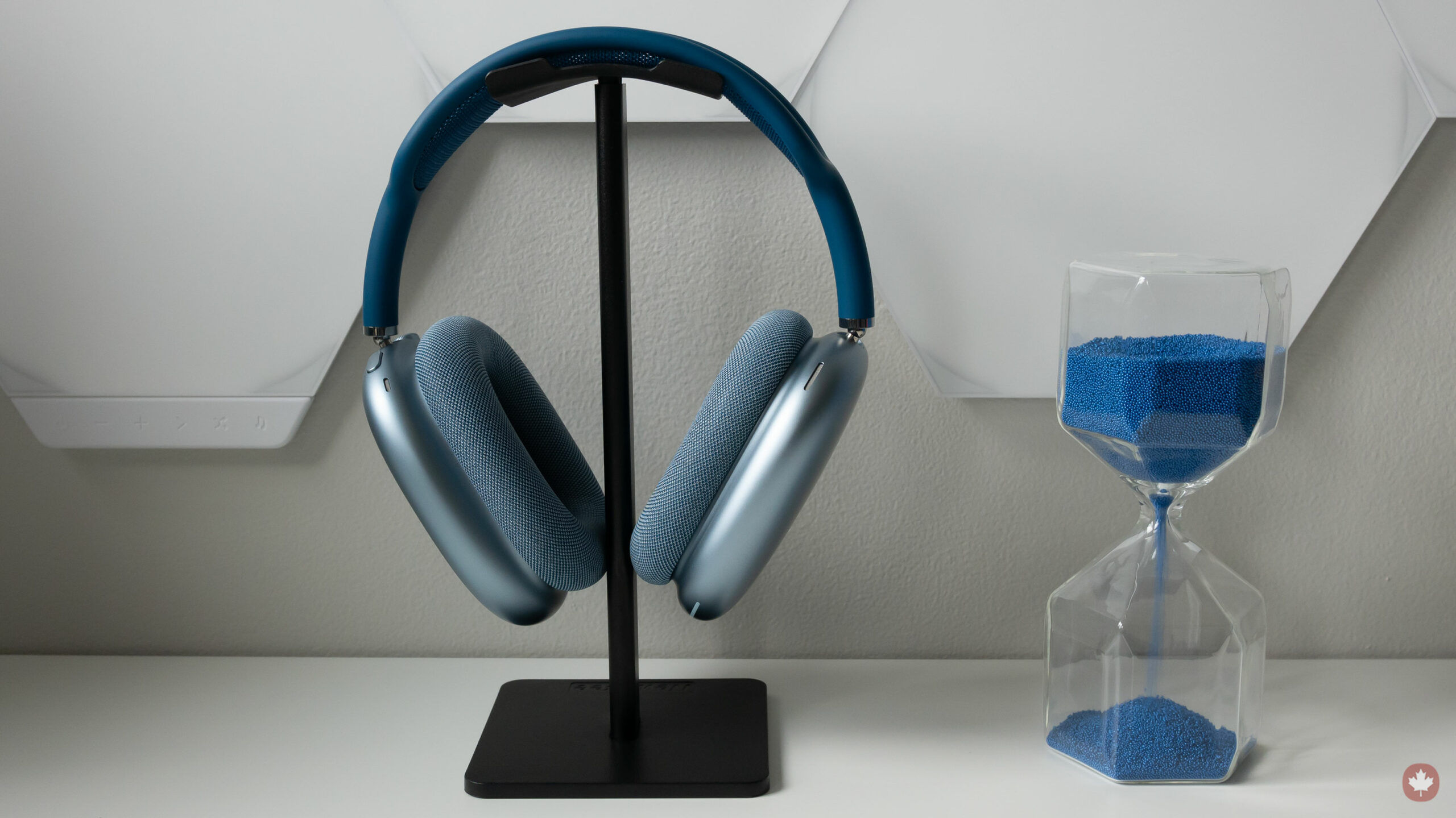
The Pros
- Impressive sound
- Great build-quality
- Extremely comfortable
The Cons
- Expensive
- No touch controls
- No support for high-res Audio formats beyond AAC
Apple’s new AirPods Max are very expensive in Canada.
There’s no getting around the fact that $779 — a number that’s well above the current exchange rate — is a costly price tag for a pair of headphones, regardless of how high-end they are. With that in mind, the AirPods Max might still be worth their price if you’re an Apple device user, appreciate high-end audio, and have an abundance of money ready to drop on new headphones.
First off, the AirPods Max build quality is beyond anything I’ve encountered before with over-ear headphones, including Sony’s WH-1000XM3, Beats’ Solo 3 headphones and several other over-ear sets from Bose and Sennheiser; they’re truly on another level.
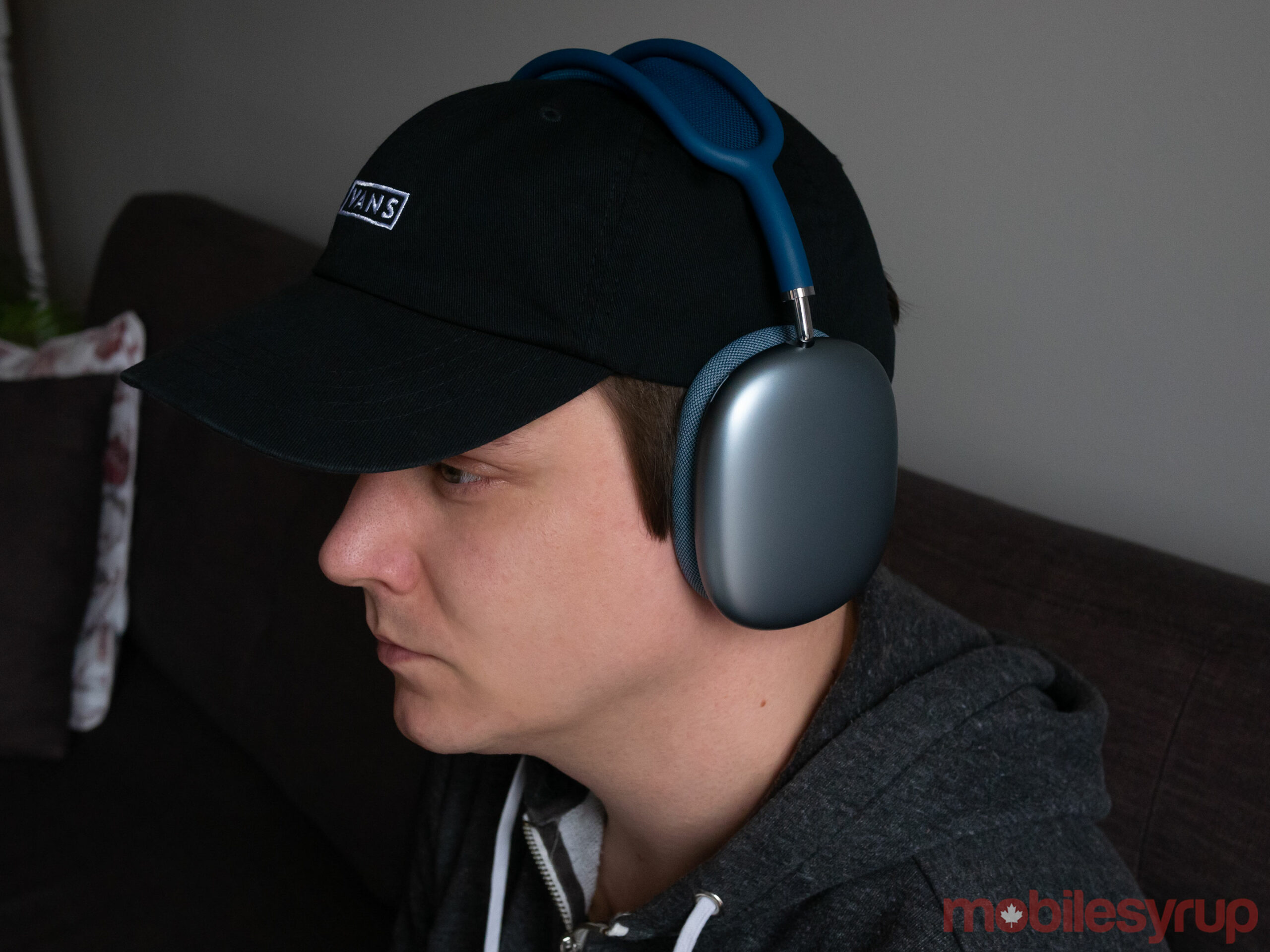
Everything from the mesh canopy to the removable earcups and aluminum coverings feels decidedly premium. On the sound quality side of things, the Max feature crisp audio and a wide sound stage that excellently balances the highs and lows of various types of audio, including music, podcasts, television/movies and more. However, do they sound that much better than Sony’s WH-1000XM series of headphones or Bose’s various high-end offerings? The answer to this question is a resounding no.
Whether or not you’ll appreciate what the AirPods Max have to offer will comes down to how much of an audiophile you are.
“…Apple’s AirPods Max are my favourite over-ear headphones that I’ve ever used”
There are other concerns as well, including the headphones’ strange, flimsy ‘Smart Case,’ the fact that you can’t turn them off manually and — just like other AirPods — that you lose a lot of their key functionality if you connect the AirPods Max to a device that isn’t an Apple product.
With all that said, despite their limitations, Apple’s AirPods Max are my favourite over-ear headphones that I’ve ever used — and given their price tag, they should be.
Dressed to kill
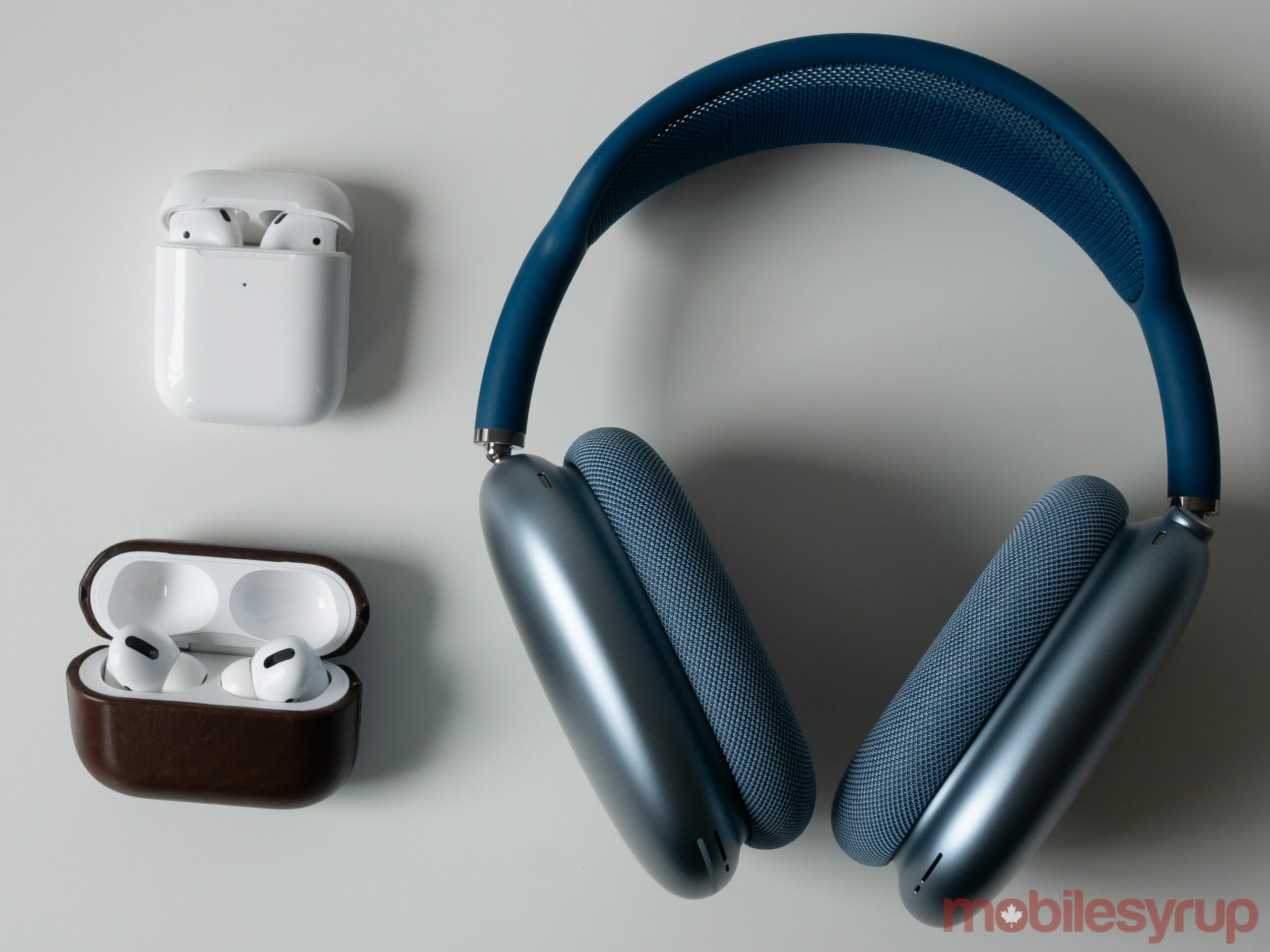
Though my initial reaction to the simple, brushed metal look of Apple’s AirPods Max was negative, the headphones’ design has grown on me considerably over the last few days.
Apple sent me the ‘Sky Blue’ set, but all five colours, including ‘Silver,’ ‘Space Gray,’ ‘Green’ and even ‘Pink,’ look great. The anodized aluminum earcups are generally dull and understated, but they also have an interesting flash to them when hit by light at certain angles. That said, I have durability concerns regarding the earcups, especially since I’m prone to dropping my headphones frequently, even when using them at home.
Other notable features include a smooth telescoping arm attached to each headphone cup. Rather than the usual clicking most high-end headphones feature, the arm slides and locks very fluidly. The spring-tempered stainless steel headband covered in a soft rubber coating feels equally high-end. It seems very flexible and holds its shape regardless of how long you’ve been wearing the headphones. In comparison, I find the plastic headbands featured even in many high-end over-ear headphones often bend out of place after several weeks of use.
In fact, the band retains its bounce so much so that when I take the AirPods Max off, the earcups often lightly tap each other. In the roughly four days I’ve spent with the AirPods Max, this hasn’t resulted in any scuffs or scratches, but it could in the future.
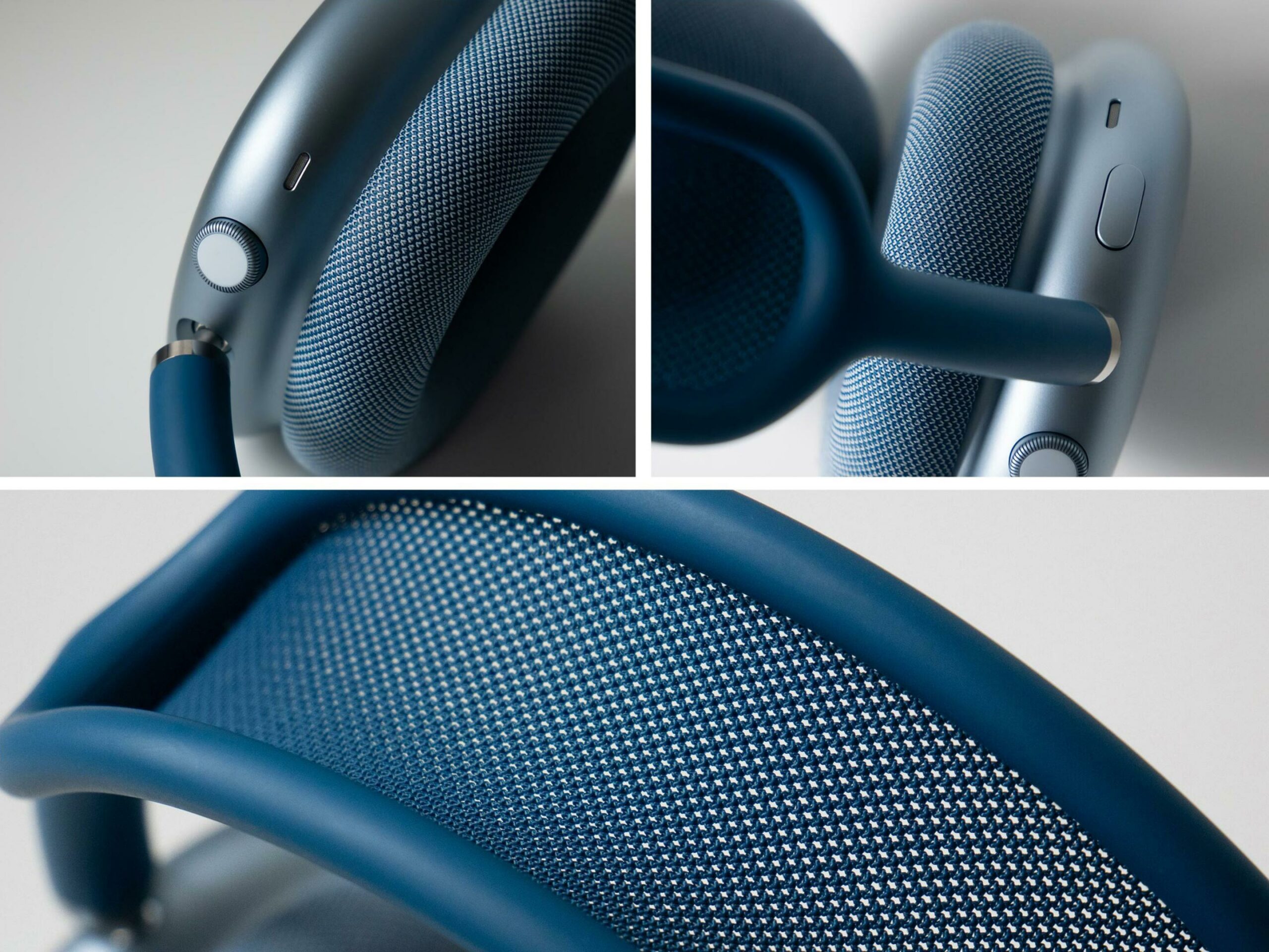
The knit mesh canopy running along the part of the AirPods Max’s band that actually touches your head is also a cut above anything I’ve experienced before with over-ear headphones. At times, it feels like the headphones aren’t even touching your head. Similar to the aluminum earcups, I am concerned about long-term durability, but the mesh material does feel very solid.
The memory foam cushion earcups that can easily be removed and attached to the AirPods Max through magnets are very comfortable. Similar to the headband, it feels at times like I’m not wearing headphones at all. The cushions are also great at removing outside noise. Given how many times I’ve replaced headphone cushions on my Beats Solo 3 headphones and my now ancient Sony PlayStation Pulse Elite Edition headset, I also appreciate that Apple is selling additional AirPods Max ear cushions for $85. This doesn’t really matter at all, but they also do smell kind of weird, though I’d guess that will disappear over time — it’s sort of like an intense “new car” smell.
However, the memory foam cushion is also a magnet for sucking up sweat, which can get super uncomfortable. Because of this, the AirPods Max aren’t great for wearing while working out. It’s also worth noting that while the headphones are very comfortable, they’re also rather heavy at 385g. This means that while I often forget I’m wearing the AirPods Max headphones while sitting at my desk, they felt cumbersome when I tried to use them while exercising.
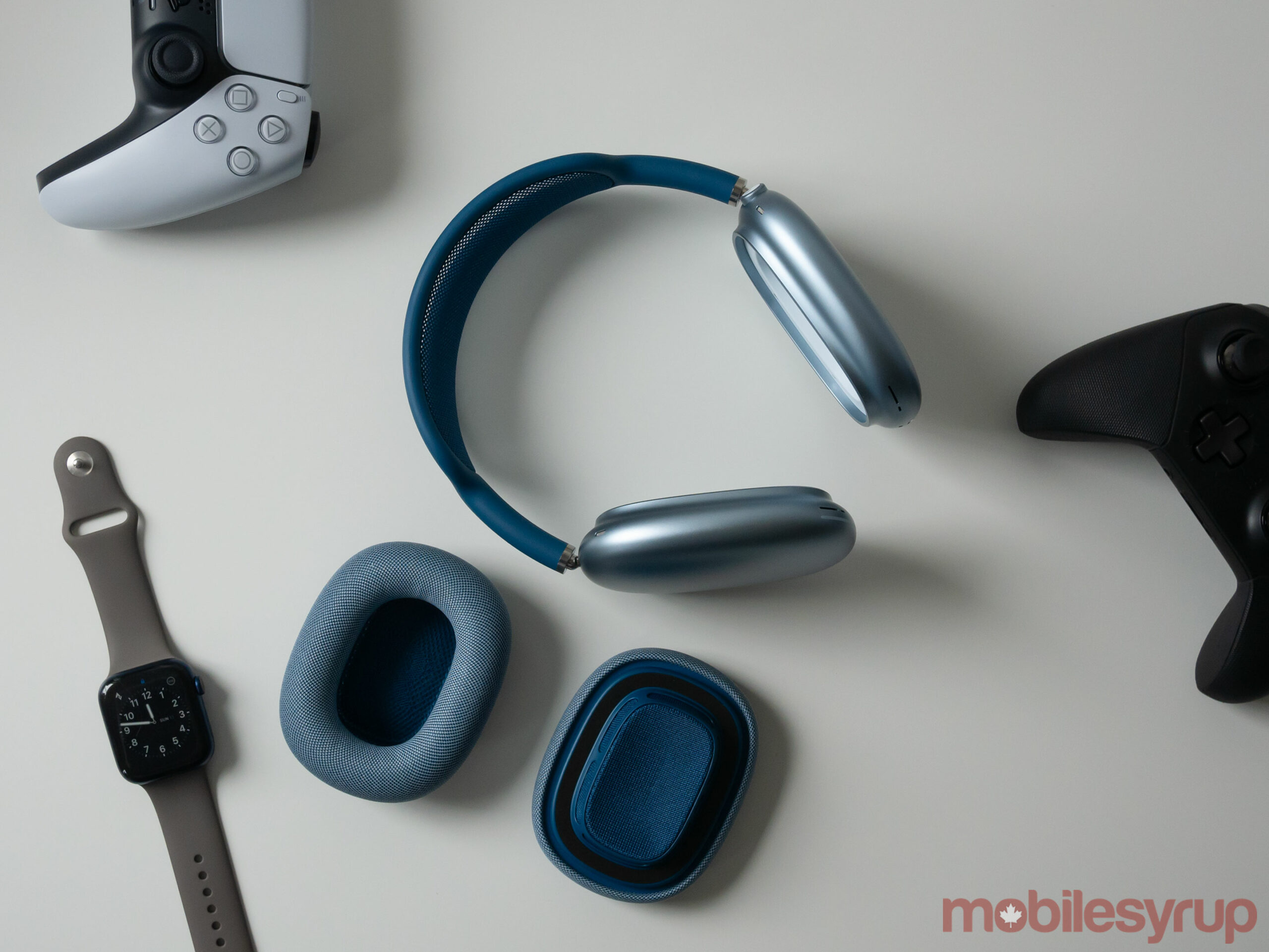
Despite early rumours indicating that the AirPods Max would feature a touch panel on each ear cup, the only buttons are a larger version of the Digital Crown included on Apple Watch and a single button for toggling ‘Noise-Cancelling,’ ‘Transparency’ and ‘Off’ — you can also change this within the iPhone, iPad or Mac’s Bluetooth settings. It’s disappointing the AirPods Max doesn’t feature some sort of touch input given that nearly every pair of headphones — including Apple’s other AirPod models — have touch-based controls.
Instead, switching tracks is controlled by clicking the Digital Crown, with lowering or increasing the volume performed by twisting the dial. While I initially thought I’d really miss just tapping the headphones to control them, using the Digitial Crown is surprisingly intuitive. It’s somewhat hard to get used to reaching for it, given that it’s located on the back of the right earcup. On the other hand, shifting the volume by twisting the dial feels great and is very intuitive.
While I really like the headphone’s design and feel it’s one of the AirPods Max’s strongest features, it’s disappointing they don’t fold up in some way like Apple-owned Beats headphones and nearly every other manufacturer’s sets.
A single press on the Digital Crown plays, pauses and answers a phone call, a double press skips forward and three presses goes back. The other, slightly larger button located opposite the digital crown is used for toggling active noise-cancelling and ‘Hey Siri’.
While I really like the headphones’ design and feel it’s one of the AirPods Max’s strongest features, it’s disappointing they don’t fold up like Apple-owned Beats over-ear headphones and nearly every other manufacturer’s sets. This makes the AirPods Max difficult to tuck away and drop in a bag and makes me question if I’ll ever take them on the go while travelling or commuting to work when the world gets back to normal post the ongoing COVID-19 pandemic.
The ‘Smart Case’ is strange and not great
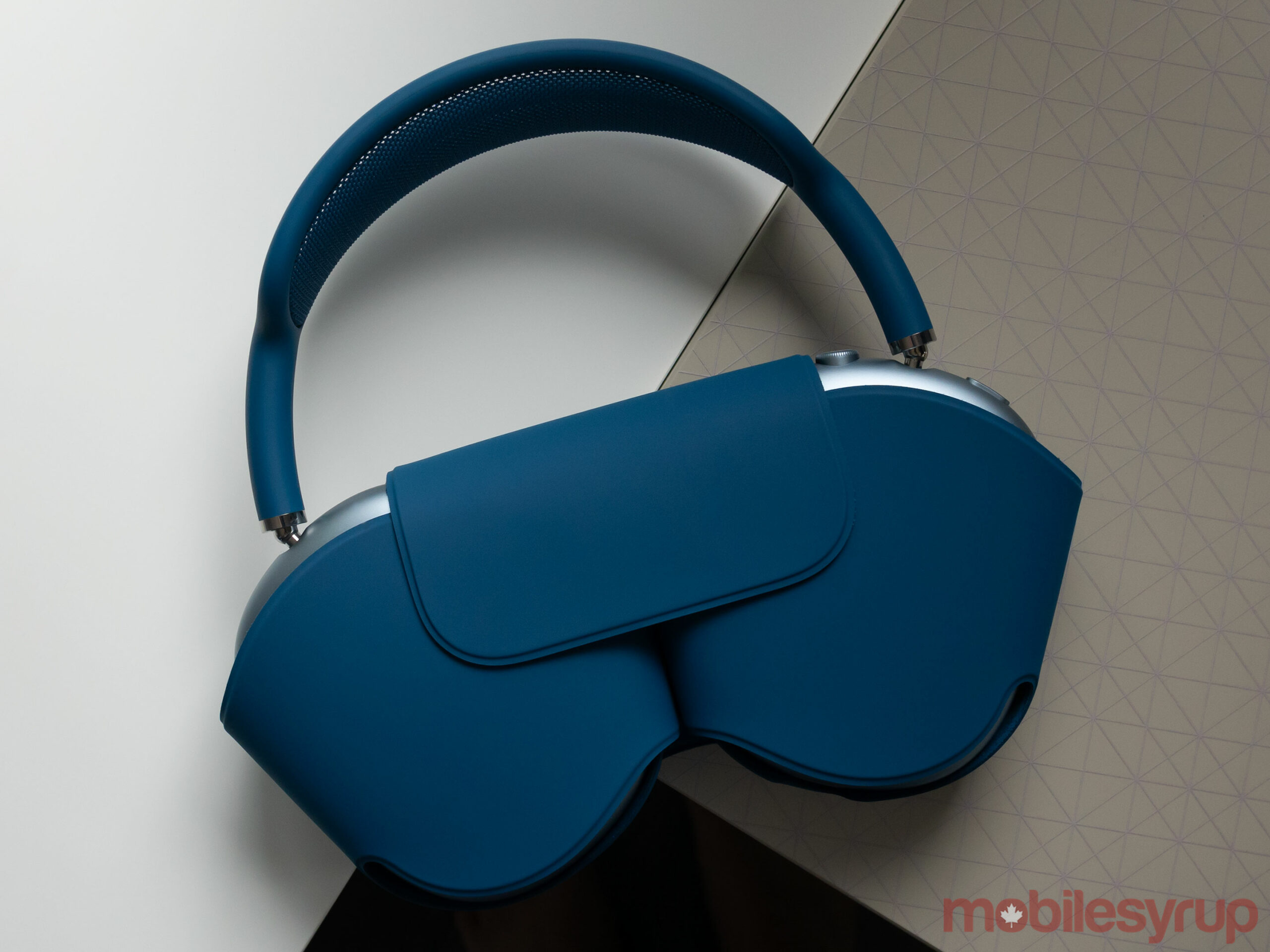
By now, you’ve likely seen the mostly funny memes comparing the AirPods Max carrying case to a purse or a bra. While the ‘Smart Case’ is indeed awkward and one of the strangest products Apple has ever released, it isn’t quite as bad as I expected.
It’s easy to slide the AirPods Max into the leather carrying case, but it offers very little protection. The top, bottom and the headphones’ band remain exposed. Imagine sliding the very expensive AirPods Max in their Smart Case and dropping them in a backpack, only to find that a pen or other sharp object somehow got entangled with the knit mesh canopy or scratched the headphones’ ear cups?
“There’s no way to turn off the headphones manually”
The case itself is also extremely flimsy and flexible, allowing the headphones to potentially get crushed easily. The only worthwhile purpose for the Smart Case seems to be for putting the AirPods Max in sleep mode, which is almost as perplexing as the look of the case itself. There’s no way to turn off the headphones manually. The only way to do this is to slide them into the case or wait for them to shut off on their own after taking them off your head.
As a result, if you want to show your friend a new song you’ve just heard after wearing the AirPods Max and you don’t have the Smart Case on hand, you’ll need to manually disconnect from the headphones through your device’s Bluetooth settings.
It’s likely the inevitable second-generation version of Apple’s first over-ear headphones will feature a far better carrying case. There’s also a possibility that third-party manufacturers will release cases for the headphones but given how unlikely it is Apple would ever allow an accessory like that in its MFi program, I’m not sure I see this happening.
As it stands, the Smart Case is one of the AirPods Max’s most significant weaknesses.
The magic of AirPods Max, as long as you use Apple devices

The most impressive thing about Apple’s wireless earbuds have always been how easily they connect to the company’s devices. You just hold the AirPods Max near the device you want to connect them too and you’re ready to go.
Bluetooth earbuds from other manufactures like Samsung and Google feature similar functionality now, but I’ve always found the process of connecting Apple’s headphones and earbuds to be quicker and more reliable.
Just like other AirPods, the AirPods Max are aware of when you’re wearing them thanks to optical sensors in each ear cup that detect movement and rotation. This pauses music when you take them off and resumes your tunes when you put them back on. Even lifting an earcup slightly pauses music, which is pretty cool and not a feature I’ve encountered with other over-ear headphones.
Another familiar feature is ‘Hey Siri’ integration just like other versions of Apple’s AirPods, allowing users to control their music, make calls, set reminders and more with simple voice commands.
“Thankfully, it’s still possible to toggle noise-cancelling regardless of if you’re using an Apple device”
While expected, it’s unfortunate that none of the above features work with devices that aren’t Apple products. For example, after connecting the AirPods Max to the Note 20 Ultra by holding down the Siri/noise-cancelling button for a few seconds, I quickly realized that music doesn’t start when you’re wearing the headphones or stop when you take them off. Further, you only get access to Siri with Apple’s devices.
Thankfully, it’s still possible to toggle noise-cancelling regardless of whether you’re using an Apple device. So while you’ll still get the benefit of excellent audio quality, noise-cancelling and a high-quality build, if you plan to use the AirPods Max with a PC or Android device, the experience isn’t quite as seamless.
On another note, when I take the headphones off with the AirPods Max connected to my M1 MacBook Pro, the audio automatically switches to the MacBook’s speakers, which isn’t something I’ve encountered with other AirPods and could be an issue for some people. This only seems to happen with some macOS apps, however.
It’s all about the audio quality
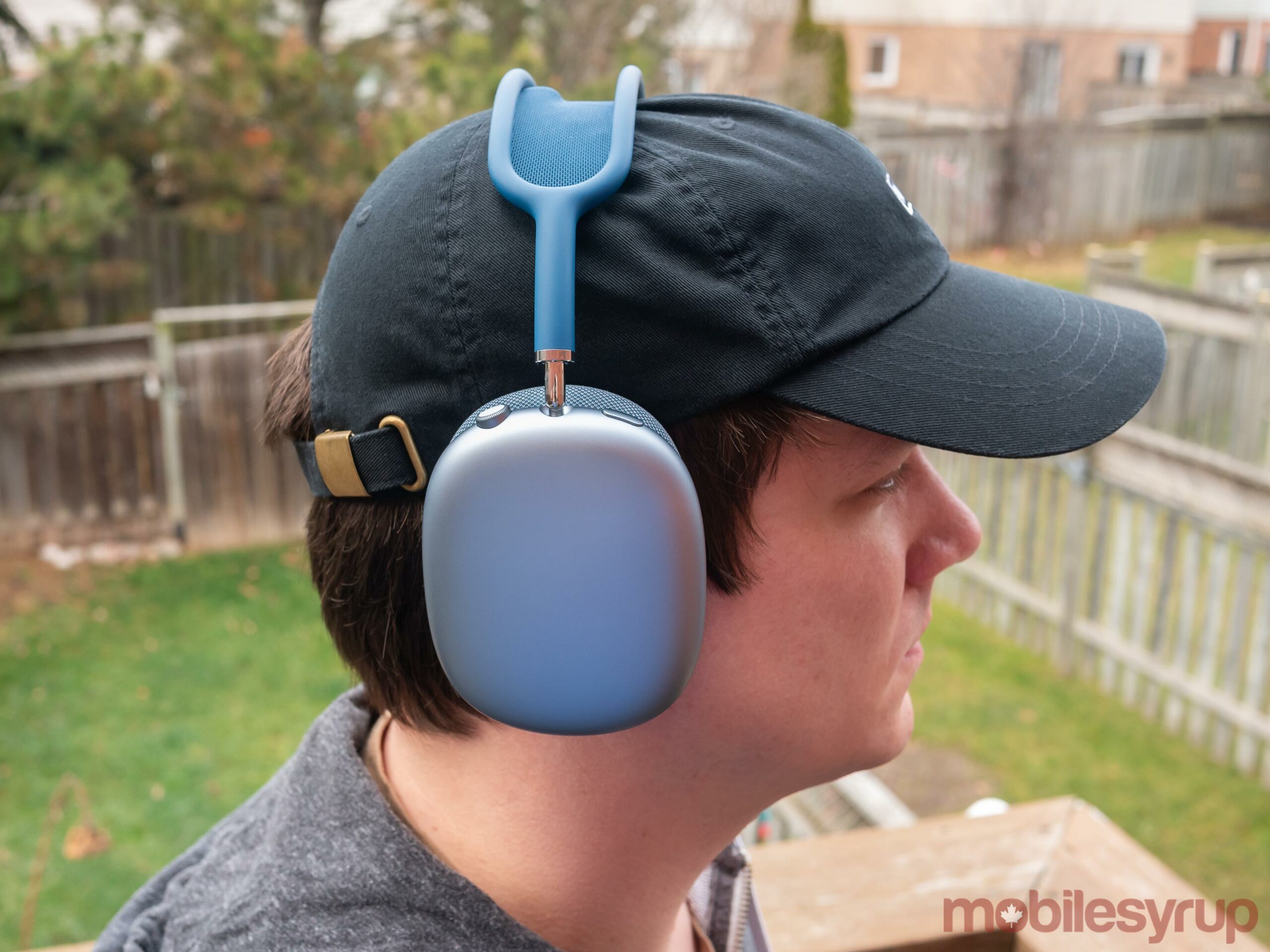
Where the AirPods Max truly shine is in the audio quality department. They are the best-sounding headphones I have ever encountered, surpassing even Sony’s WH-1000XM3s (I haven’t used the WH-1000XM4s but to my understanding, the sound quality is nearly identical to their predecessors), several of Bose’s higher-end headsets and even Apple’s own Beats Studio 3 headphones.
On the subject of Beats, it’s strange that the company is in a sense now Apple’s budget brand of headphones. 15 years ago when I was in high school, they were the expensive headphones with upper mid-range sound quality that everybody wanted.
Inside each cup are Apple-designed 40mm dynamic drivers powered by a dual neodymium ring magnet motor that results in “harmonic distortion of less than one percent.” What this means in practice is that the AirPods Max sound really, really good.
This is at least in part due to the pair of Apple H1 chips featured in each individual earcup. The company says that this allows the AirPods Max’s 10 audio cores to execute over 9 billion operations per second through their computational audio Adaptive E1 feature.
The AirPods Max handle bass excellently, don’t distort audio at loud volumes and generally feature the widest sound stage I’ve ever encountered in a pair of headphones. To be clear, at $779, anything less than this would be wildly disappointing.
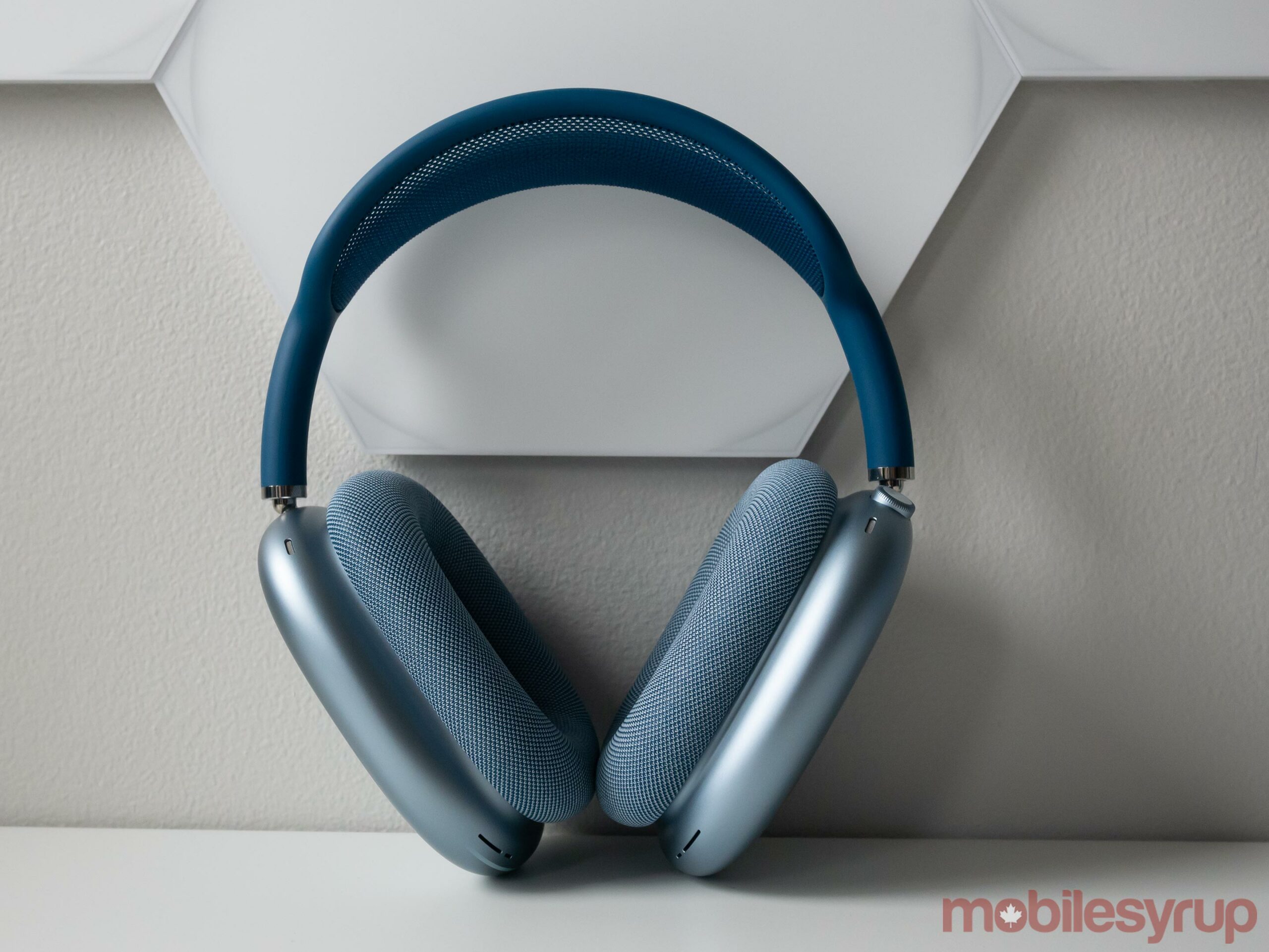
Whether I was listening to Taylor Swift’s ‘no body, no crime (feat. Haim),’ an acoustic song with several layered instruments and generally soft tones, or a bass-driven song like Kid Cudi’s ‘Tequila Shots,’ the audio is incredibly crisp, clear and detailed.
What I’ve found most interesting is that the quality of the AirPods Max have actually allowed me to hear new parts of songs I’ve already listened to thousands of times. A good example of this is Blink-182’s ‘Always,’ a song that features several layers of backing vocals placed on top of a swirling chorus. For the first time in my life, I’m actually able to clearly hear the song’s catchy bass riff. I encountered something very similar with the opening to the band’s song ‘Reckless Abandon,’ a track I’ve been listening to regularly since I was 12. I’ve never noticed it before, but there’s a recording of someone talking at the beginning of the song that can be heard clearly through the right ear.
“It’s worth noting that Bluetooth headphones like the AirPods Max are only ever going to be capable of offering a finite amount of bandwidth to deliver music despite featuring Bluetooth 5.0.”
Of course, it’s important to place the AirPods Max’s sound quality in the context of its competition. While the headphones sound undeniably amazing, the sound quality isn’t that much better than the far cheaper Sony WH-1000XM series headphones, arguably the AirPods Max’s most direct competition in the high-end headphone space. In fact, some people might not even notice the difference.
The AirPods Max also sound way better than Apple’s AirPods Pro, but they should since they’re over-ear headphones. Earbuds will generally never be able to compete with over-ear headphones when it comes to features like sound quality and noise-cancelling.
It’s worth noting that Bluetooth headphones like the AirPods Max are only ever going to be capable of offering a finite amount of bandwidth to deliver music despite featuring Bluetooth 5.0. Further, even though these are high-end headphones, they only support Apple Digital Masters tracks and not other high-res audio codecs. Though this won’t matter to most people, it’s disappointing given the expensive price tag.
Industry-leading active noise-cancelling

Speaking of noise-cancelling, this is a feature where I think the AirPods Max have a distinct advantage over other comparable headphones.
Similar to audio quality, the AirPods Max feature the best active noise-cancelling I’ve ever encountered in over-ear headphones and absolutely blow the AirPods Pro away. The headphones feature a total of eight microphones for noise-cancelling, with two of these microphones being located inside the AirPods Max earcups. The microphones listen for outside noise and adapt the headphones’ noise-cancelling accordingly over 200 times per second.
Since I’m still working from home, I haven’t been able to test the AirPods Max’s active noise-cancelling on the busy streets of Toronto, the Go Train or in the often loud MobileSyrup office. However, my partner is nearly always on some sort of work-related video call (seriously, there were a few days where she was on a call nearly the entire day), which can sometimes make writing and editing difficult.
While I’ve been impressed with the noise-cancelling featured in headphones like the Beats Studio 3 and Bose’s QuietComfort 35 wireless headphones, the AirPods Max are far better. Even when my partner is sitting less than a metre away from me, I can barely hear a word she’s saying. Unlike the sound quality improvements the AirPods Max offer, the active noise-cancelling is way beyond anything the competition currently offers.
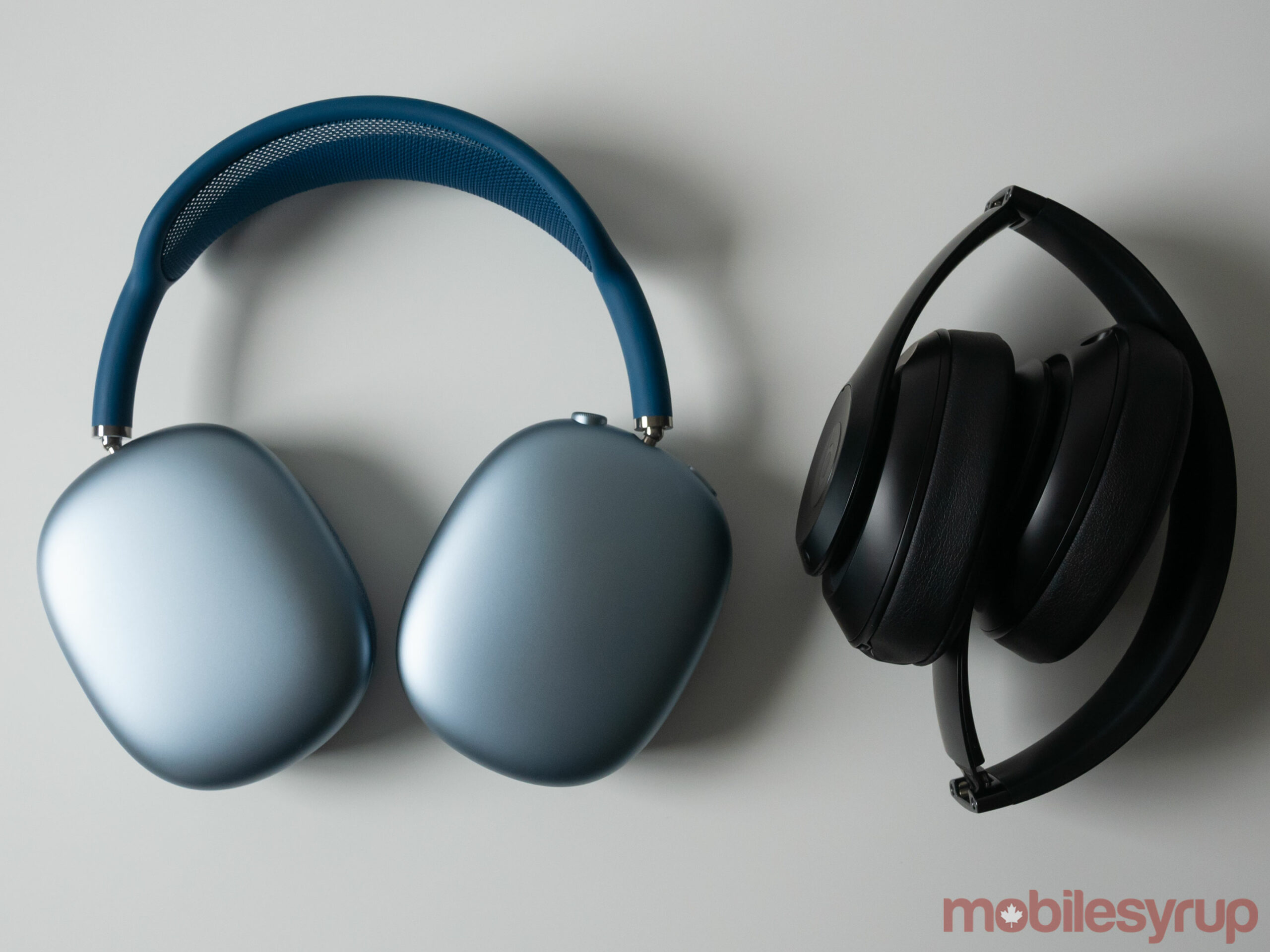
It is worth noting that just like other over-ear headphones, that pressure feeling I often get when using noise-cancelling is, unfortunately, still present. It would have been great to see the AirPods Max feature some sort of vent system that mitigates this feeling, similar to the AirPods Pro, which remain the only in-ear earbuds I’ve ever worn that don’t feel like an insect is burrowing into my ear canal.
You can also turn noise-cancelling off entirely or turn on Transparency Mode, which does a decent job of letting you hear the world around you by passing outside noise through the headphones’ several microphones.
Then there’s Apple’s Spatial Audio technology that utilizes dynamic head tracking to create a movie theatre-like experience for content that features 5.1, 7.1 and Dolby Atmos surround sound. While it’s impressive that it ensures the sound field is always mapped to the same spot, with audio moving as you shift around, it’s disappointing this technology doesn’t work with the Apple TV, given that it relies on the gyroscope and accelerometer featured in iOS devices. Still, the sound of an airplane actually flying over your head while wearing a pair of headphones is impressive despite the limited device support.
Everything else
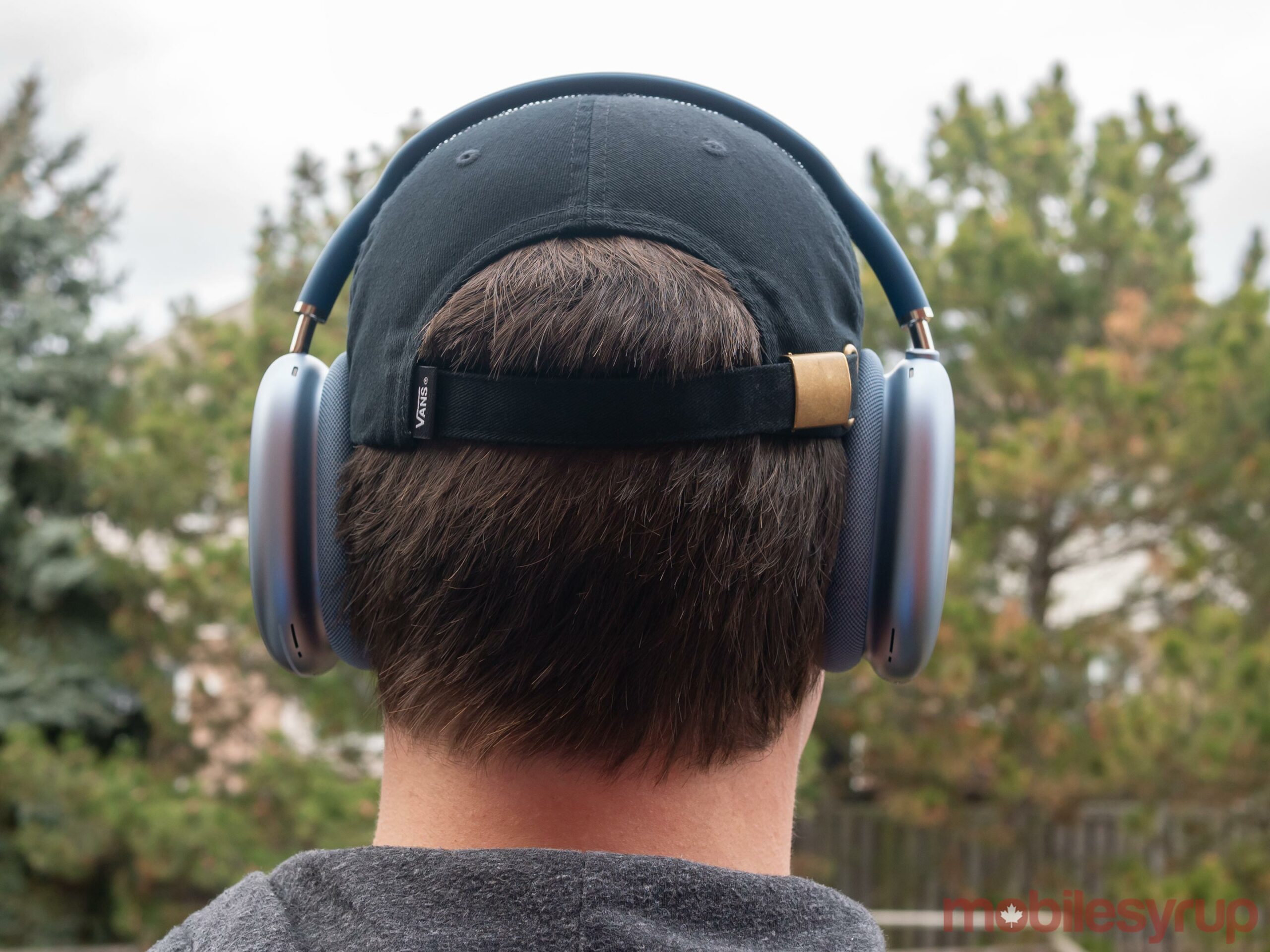
The AirPods Max also feature impressive battery life coming in at roughly 20 hours, according to Apple. In my experience, I was able to get between 20 and 22 hours of battery out of the headphones as long as I put the AirPods Pro Max back in their Smart Case when I was done using them.
Beyond the issues I have with the Smart Case, Apple’s first over-ear headphones also suffer from another notable problem. For reasons that remain unclear, Apple has opted to not include a charger in the headphones’ box (there is a Lightning-to-USB power cord). Further and more importantly, there’s no Lightning-to-3.5mm cable in the box either.
If you want to be able to hook the AirPods Max up through a wired connection, you’ll need to shell out an additional $45 on top of the already expensive $779 price tag for the headphones to hook the AirPods Max up to a device that doesn’t support Bluetooth audio. A great example of this is if you’re travelling and want to use the AirPods Max to listen to the in-flight entertainment system. I also tested the Lightning-to-3.5mm adapter Apple released a few years ago with a 3.5mm-to-3.5mm cable and it, unfortunately, didn’t work.
“While calls sound okay, the quality doesn’t match a solid external mic like Blue’s Yeti or even most gaming headsets”
The other thing worth noting is that beyond obvious brand recognition reasons, it’s somewhat weird that Apple is calling its first pair of over-ear headphones “AirPods” given the name itself is so closely tied to wireless earbuds.
Finally, there’s also no U1 ultra wideband chip in the AirPods Max despite the technology being featured in the iPhone 12 series, the Apple Series 6 and even the HomePod mini. It would have made sense for Apple to include the technology in the AirPods Max since, at least in theory, it would make passing audio off to the headphones from the iPhone 12 an easier process.
The last thing worth noting is that call quality with the AirPods Max seems to fall somewhere between the AirPods Pro and a headset with an external mic. While calls sound okay, the quality doesn’t match a solid external mic like Blue’s Yeti or even most gaming headsets.

Great but not perfect
Despite their obvious issues, the AirPods Max are my favourite pair of over-ear headphones I've ever used. They're extremely comfortable even if you're wearing them for an entire day, look decidedly high-end and feature the best audio quality I've ever encountered in a pair of headphones.
Unfortunately, their case is more than lacklustre, much of their magic is lost when you connect them to any device that isn't an Apple product and, most importantly, they're very expensive. On top of that, a lot of people probably won't hear the difference between the audio quality the AirPods Max offer when compared to headphones like Sony's far cheaper $499 WH-1000XM4s
It also feels like perhaps there were some rumoured features left on the cutting room floor, with touch panel controls being the most notable example. My guess is touch controls and a far better case are likely coming in the second-generation version of the AirPods Max.
Still, with all that in mind, if money isn't a concern for you when it comes to headphones, there's a lot to like about Apple's AirPods Max.
Apple's AirPods Max are now available for $779
"If money isn't a concern for you when it comes to headphones, there's a lot to like about Apple's AirPods Max"
MobileSyrup may earn a commission from purchases made via our links, which helps fund the journalism we provide free on our website. These links do not influence our editorial content. Support us here.


